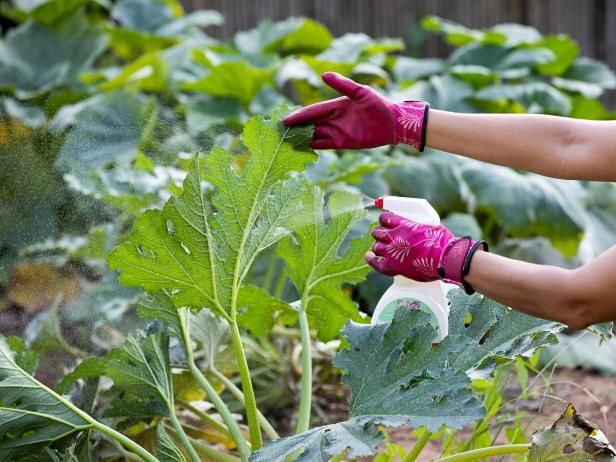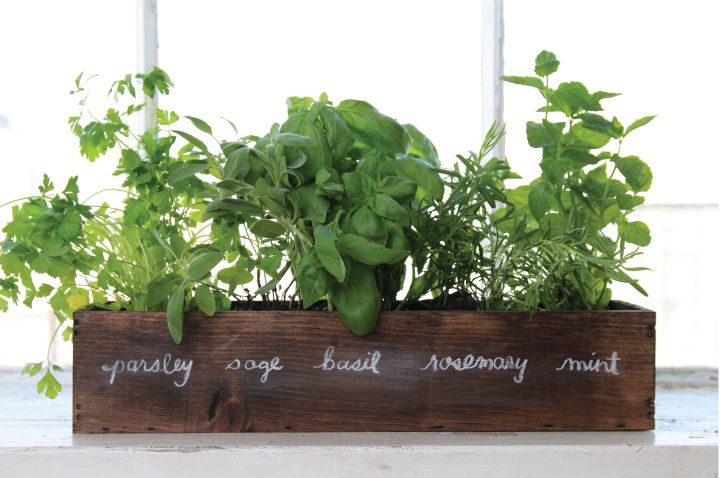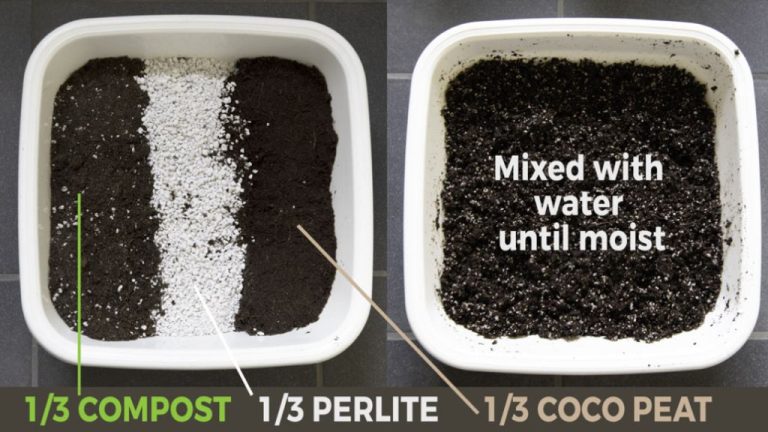Urban Vegetable Gardening: Growing Fresh Produce In Limited Spaces
Urban vegetable gardening refers to growing fresh fruits, vegetables, herbs, and other edible plants in limited spaces within cities and suburbs (Marialma.com, 2022). This could include small backyards, balconies, rooftops, windowsills, and community gardens. The benefits of urban vegetable gardening include having access to fresh, nutritious produce, connecting with nature, beautifying urban spaces, building community, and learning new skills (Accoravillage.com, 2022).
This guide will cover choosing a suitable location, selecting appropriate crops, preparing the soil, planting, watering, fertilizing, managing pests, harvesting produce, and overwintering the garden. The goal is to provide urban dwellers with the key information and tips needed to start and maintain a productive edible garden, even with limited space.
Choosing a Location
When selecting a location for an urban vegetable garden, there are a few key factors to consider:
Sunlight Requirements: Most vegetables need at least 6 hours of direct sunlight per day. Observe the light conditions throughout the day. Choose a spot that receives consistent sunlight, especially during the morning hours. South facing areas often get the most sunlight.
Proximity to Water: Having an outdoor faucet or rain barrel nearby saves time and effort watering. Pick an area close to an existing water source. Use hoses, watering cans, or drip irrigation to easily transport water to plants.
Available Space: Consider how much room is needed for the types of crops to grow. Leafy greens need less space than vine crops or root vegetables. Optimize vertical space with trellises too. Even a patio or balcony has potential with containers and hanging planters.
Soil Quality: Amending soil with compost improves fertility and drainage. Test soil pH and add lime to increase alkalinity for most veggies. Ensure soil is loose, nutrient-rich and well-draining for healthy plant roots.
Selecting Crops
When selecting crops for an urban vegetable garden, focus on plants that can thrive in limited space. Some top choices include:

Herbs like basil, parsley, oregano, thyme, and rosemary grow well in containers and don’t require much space. Planting a variety of herbs allows you to add fresh flavor to home cooking.
Leafy greens like lettuce, spinach, kale, and chard grow quickly and can yield multiple harvests from one planting. Salad greens like lettuce and spinach can be grown in containers or densely planted in raised beds.
Root vegetables like carrots, radishes, beets, and turnips develop delicious edible roots below ground. They don’t take up much space above ground as they grow. Root veggies can be grown in raised beds or even large containers at least 12 inches deep.
Vining crops like cucumbers, squash, melons, and beans can be trellised vertically along walls, fences, or cages. This allows them to grow upwards instead of sprawling over a large area. Support structures let vining veggies make efficient use of limited space.
Fruiting crops like tomatoes, peppers, and eggplants produce bountiful vegetables on compact plants. Cherry tomato varieties can flourish in hanging pots. Many fruiting crops grow well in containers at least 10 inches deep.
Soil Preparation
Proper soil preparation is crucial for a productive urban vegetable garden, especially in limited spaces. The soil needs to provide essential nutrients for plants while allowing for adequate drainage. There are a few key steps to prepare the soil:
Test the soil pH and nutrient levels. Home tests or professional lab tests can identify any deficiencies that should be amended with fertilizer or other additives like lime. Optimal pH for vegetable gardens is between 6.0-6.8. See this guide for testing recommendations.
Build raised planting beds for better drainage and root development. Raised beds with a depth of at least 6 inches prevent soil compaction while promoting healthy plant growth. Lining beds with landscape fabric helps limit weed growth. Construct beds with rot-resistant wood like cedar or redwood. See this resource for raised bed construction tips.
For container gardening, use a high-quality potting mix. Aim for a lightweight mix that drains well but still retains moisture and nutrients. Mix in a slow-release fertilizer at planting time. See this guide for potting mix recommendations.
Amend native soil with compost or other organic matter to improve texture and nutrients. Till amendments into the top 6-12 inches of soil. Well-amended soil encourages strong root systems and plant vitality.
The proper soil foundation is the most important starting point for growing a vibrant, productive urban vegetable garden.
Planting
When it comes to planting an urban vegetable garden, you have two main options – starting from seeds or using transplants/seedlings. Seeds are often cheaper and allow you control over the varieties, but require more time and care to get plants established. Transplants are convenient as they bypass the seed starting process, but have less variety and can be more expensive. Here are some key considerations for each approach:
If using seeds, pay close attention to the planting schedule on the seed packets. Some seeds can be direct sown into the garden bed after the last frost date, while others need to be started indoors 4-8 weeks before the last frost. When sowing seeds, plant at the recommended depth and space them according to the mature plant size. Thin crowded seedlings for proper spacing. Many vegetables like tomatoes, peppers, and eggplants must always be started indoors.
If using transplants, select young plants with 4-6 true leaves and a well established root system. Harden off plants for 7-10 days before transplanting. Dig holes the width of the root ball and plant at the same depth or slightly deeper than the pots. Water transplants well and provide shade on hot days. Allow proper spacing between plants according to variety.
Whether planting seeds or transplants, most vegetables grow best with support structures like cages, stakes, or trellises. These keep plants tidy, improve air circulation and light exposure. Bush type tomatoes and peppers may not need support. Vining plants like cucumbers, peas, beans, and squash require vertical structures. Installing supports at planting helps avoid root damage later.
With the right approach, planting is one of the most exciting steps in establishing a bountiful urban vegetable garden!
Watering
Proper watering is crucial for growing healthy vegetables in an urban garden. The watering schedule depends on factors like temperature, sunlight exposure, soil type, and the crops being grown. In general, vegetables need about 1-2 inches of water per week, either from rain or irrigation (Source).
There are several methods for watering an urban vegetable garden: hand watering with a hose or watering can, drip irrigation, sprinklers, or self-watering containers. Drip irrigation and self-watering containers are efficient options that conserve water. Hand watering allows control over how much each plant gets but takes more time (Source).
To conserve water, avoid watering at midday when evaporation is highest. Water deeply and infrequently, rather than frequent light watering. Adding organic matter like compost to soil helps retain moisture. Mulching around plants reduces evaporation. Grouping plants with similar water needs together makes irrigation more efficient.
Fertilizing
Proper fertilization is crucial for healthy plants and high yields in an urban vegetable garden. When fertilizing, you have two main options: organic fertilizers or chemical fertilizers.
Organic fertilizers like compost, manure, bone meal, and fish emulsion work slowly over time to feed plants. They promote healthy soil biology. Compost and manure can be worked into beds before planting. Bone meal and fish emulsion can be mixed into soil or used as a side dressing during the growing season. Organic fertilizers must be applied more frequently than chemical fertilizers.
Chemical fertilizers like ammonium nitrate provide an instant boost of nutrients, especially nitrogen, to plants. However, they do not improve soil health over time. Chemical fertilizers should be applied according to label instructions, as over-application can burn plants. Controlled-release chemical fertilizers only need to be applied once per season.1
When using either type of fertilizer, follow package instructions carefully and fertilize based on what your specific crops need. Fertilize more heavily for leafy greens and fruiting vegetables. Go slowly with fertilizer for root crops and herbs. Lay off fertilizer for any legumes, as they fix their own nitrogen from the air.
Pest Management
Growing vegetables in an urban environment poses some unique pest management challenges. Common pests in urban vegetable gardens include aphids, cabbage worms, slugs, snails, and tomato hornworms. These pests can quickly damage crops, but there are effective organic solutions.
Diatomaceous earth, neem oil, insecticidal soaps, and Bacillus thuringiensis (Bt) are gentle pest control products that can be used to manage pests organically. Applying these at first signs of infestation can stop pests in their tracks. It’s best to cover all leaf surfaces to ensure good coverage. Always follow label directions carefully.
Exclusion is also an important pest management strategy. Floating row covers and insect mesh netting can be used to physically keep pests off plants. Traps like yellow sticky cards and pheromone traps can also help monitor and control pest populations. Maintaining general garden cleanliness and promptly removing heavily infested plants also helps deny pests their desired habitats.
With some knowledge of common vegetable pests and a focus on organic solutions and exclusion, urban gardeners can successfully protect their crops. A proactive integrated pest management approach is key to avoiding major pest damage without the use of harsh chemicals.
Harvesting
Harvesting vegetables at peak ripeness is key for getting the best flavor and nutritional value. Indicators of ripeness vary by vegetable – for example, tomatoes are ripe when fully colored and slightly soft, while zucchini and summer squash should be harvested when still small and tender with glossy skin. Leafy greens can be picked as needed once they reach a desired size.
Proper storage after harvest is also important. Some vegetables keep best refrigerated in plastic bags or containers, like lettuce, spinach, peppers, and eggplant. Others like onions, potatoes, garlic, and winter squash prefer cool, dry, and dark storage. With careful handling and storage, most vegetables will last over a week post-harvest. Freezing and canning are great ways to preserve vegetables long-term and enjoy the bounty year-round. Blanching vegetables before freezing helps maintain color, texture, and nutrients. Canning requires special equipment and techniques for safely sealing and processing jars.
Having a plan for using up ripe produce helps reduce waste. Harvesting frequently and succession planting spreads out the harvest. Sharing extras with neighbors and local food banks also cuts waste.
Overwintering
As temperatures drop in autumn, there are several important steps to prepare your urban vegetable garden for winter:
Covering beds with mulch, leaves, or row cover fabric helps insulate plant roots and prevent frost heave, which can push plants out of the ground. Wait until after several hard frosts before applying mulch to give soil organisms a chance to break down existing organic matter first (source).
Removing dead annual plants, like tomatoes, peppers, beans and exhausted vegetables prevents diseases and pests from overwintering in the garden. Compost healthy plant material if you have a compost bin (source).
Amending soil in fall with compost or other organic matter allows earthworms and microbes to work it in over the winter. Test soil pH and add lime if needed several weeks before your first spring planting.
Take notes on what grew well and make plans for crop rotation next year to improve soil health. Sketch garden plans and order seeds for spring planting so you’re ready to get a head start when soil warms up.






